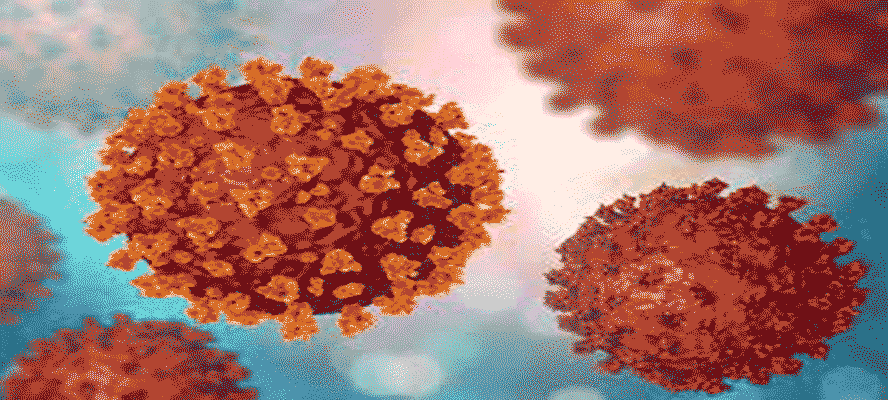As even in a crime scene, footprints and clues of malign activity are always left behind to be found by those with a keen eye. In context of human health, one of the most concerning diseases in today’s age Cancer, whose deadliness is partly due to its ability to stay hidden for a long time, till it reaches a stage where its treatment becomes more complicated. Yet, even this elusive ailment leaves traces behind, which act as biomarkers.
Among the many reasons that we take cancer as a disease difficult to treat, a major one is that cancer arises from our own cells which have mutated and turned dangerous. For our immune system, that makes it harder to distinguish them from healthy body cells, and accidental activation of the immune response against healthy cells leads to a host of whole new type of conditions. Yet, cancer cells differ from healthy body cells in some key ways. These differences serve in the identification of cancer in the body and the possibility of its occurrence. More than that, these cancer biomarkers can also help in the monitoring of disease progression, as well as give its prognosis.
What are Cancer Biomarkers
Biomarkers in general are biological molecules that are found in body fluids or tissues that can indicate
the presence of a disease. These molecules can be proteins, antibodies or nucleic acids (like RNA).
Biomarkers can be detected in blood, urine, stool samples and sputum as well as extracted from
tissues through biopsy. They prove to provide an advantage, since testing for them becomes non-invasive and low
risked. In certain cases, changes in chromosomal structures can also be
detected for certain kinds of blood cancers.
In case of cancer biomarkers many of these biological molecules appear in circulation as a byproduct of the process that caused cancer in the first place. These processes include mutations in DNA, or other modifications at the RNA or protein level. If the cause of cancer is a mutation in reproductive cells, the biomarkers that are produced as a result are detected not only in the individual but also in their offspring, provided that the offspring has inherited the mutated DNA.
Clinical Importance of Biomarkers
The importance of biomarkers is as diverse as their types. They can be used
to estimate the risk of cancer occurrence, identifying the hidden tissue
that is the source of cancer, monitoring the status of the disease, its prognosis,
as well as indicate whether the cancer will recur after it has been cured.
Monitoring the status of the disease
Generally known as Staging of cancer, the classification and progress of the cancer is usually done by anatomical
observation of the tumor tissue and the extent of its spread. Based on these features, the tumor is given a stage
as per the TNM staging system. Recently, the American Joint Committee on Cancer (AJCC) has included the use of
biomarkers along with anatomical changes to determine the stage of cancer. The biomarkers used for breast cancer
include Estrogen Receptor (E2), Progesterone Receptor (PR) and HER2 expression
Prognosis, Response to therapy and Chance of recurrence
For each type of cancer, a number of gene signatures can be assessed to estimate the prognosis for the individual.
Biomarkers checked for prognosis include variants of a particular gene, mutations in DNA or alterations in protein levels.
Cancer biomarkers can predict treatment response and help in determining which therapy would be most effective.
For example, in colorectal cancers, mutation in the KRAS gene may indicate a poor response to anti-epidermal growth
factor receptor directed therapies. In breast and stomach cancers, higher expression of gene HER2 predicts a favorable
response to agents that target HERZ. CEA for colorectal cancer and AFP, LDH, Beta hCG for germ cell tumors can be used to
predict tumor recurrence after treatment, even before the symptoms reappear.
Types of cancer biomarkers
1. Genomic biomarkers
Mutations in DNA cause cancer, either due to their loss of function or activation and increased expression.
- BRCA-1/2 Breast
- Chromosomal damage Blood cancer (Acute Lymphoma, Acute Myeloid Leukemia)
- Osteopontin Ovarian cancer
- HER2/neu Breast cancer
- Ras mutation Lung and Colon cancers
2. Proteomic biomarkers They are overexpressed proteins whose elevated levels can be detected through immunoassays. In addition, modifications of these proteins can also occur after its synthesis post translational modifications).
- PSA Prostate cancer
- Cancer antigen cancer antigen 125 Ovarian cancer
- Ca-19-9 Pancreatic and Colon cancers
- Haptoglobin Lung, Colon and Breast cancers
3. Metabolomic biomarkers This refers to the study of metabolites in cells, tissues and body fluids, changes in metabolite levels and profiles are often associated with transformation of cell to cancerous tissue,
- Stable isotope-based dynamic metabolic profiling (SIDMAP) of glucose Pancreatic cancer
- Metabolic profiling Brain tumor
Other types of cancer biomarkers include, cancer autoantibodies, miRNA, as well as epigenetic markers. Cancer autoantibodies are antibodies produced by the immune system against cancer cell antigens. Cancer autoantibodies have been found against HER2 protein, although currently sensitivity for this biomarker is low.’ miRNAs are a form of RNA that have regulatory functions in controlling the levels of other RNA and by extension, controlling the level of proteins translated from these RNA. Thus, a decrease in the level of miRNA can lead to overproduction of some proteins which can also cause cancer. miRNA can be analyzed through platforms similar to those for mRNA profiling.
Detection Techniques
DNA microarrays, PCR based tests and FISH are some of
the genomic technologies that can even help detect faulty DNA that is present
in minute amounts. Immunoassays, Chromatography and Mass Spectroscopy
(MS) are useful for the detection of proteomic and metabolomics cancer biomarkers.
Identification of Potential Biomarkers The classical technique of biomarker identification is based on the characteristics and biology of the tumor and its surrounding environment, or the metabolism of the treatment drug. Today, techniques such as high throughput sequencing, gene expression arrays as well as MS are used to identify biomarkers based on several studies. For a molecule to qualify as a biomarker, it has to have clinical validity, that is, it should reliably differentiate the overall population into two groups those who are likely and those who are unlikely to suffer the outcome by the biomarker being tested for. The confirmation of this validity is obtained when the same results are reproduced in a different and independer of samples. Even after a biomarker has been found for a particular cancer, it is essential to estimate its applicability in the general population by assessing the benefit-to-harm ratio, especially in biomarkers that are meant to predict the occurrence of cancer later in life. An error in this can lead to inappropriate treatment selection or overtreatment.
Limitations
The major limitation in the field of cancer biomarker discovery is the absence
of a proper structure in the process, similar to that present for drug discovery.
This requires better coordination between laboratories and the extension of the
study over a greater scale to provide improved epidemiological validity.
The development of generalized protocol for biomarker discovery will allow the
transition of newly discovered biomarkers from laboratories to clinics.
Among the difficulties of widespread use of biomarkers is that they might indicate the presence of cancer where there is none (false positive). Till now, no single biomarker provides 100% sensitivity and specificity. As a result, a group of biomarkers are tested together to reduce false positives and false negatives. For this, detection techniques are required which can allow simultaneous measurement of multiple biomarkers. The use of microarray technology is a powerful tool in this regard. Even minute changes in chromosomes can be detected when studying global gene expression with respect to human cancers. Microarray-based protein chips, label-free detection systems and antibody-based protein chip systems are techniques that can be applied at the clinical level to provide rapid and sensitive cancer testing
Future Scenario
Currently, scientists are working on the discovery of new cancer
biomarkers. Gene expression pattems are being evaluated to determine the
prognosis and treatment response of cancer patients. Recently, the FDA has
approved novel diagnostic bladder cancer biomarkers such as NMP 22 and BTA.
As with most disorders, including cancer, early detection is first step towards a
proper treatment. Thus, the future of cancer biomarkers belongs to the development
of those biomarkers which can indicate the occurrence of cancer and predict its prognosis.
These biomarkers will guide decision making during cancer management, while also
being cost effective. For certain cancers whose treatment is more difficult,
cancer biomarkers can allow early detection, followed by surgery to excise the
tumor before its spread. Cancer biomarkers in the future may consist of small kit
that includes a panel of six to ten markers to give accurate staging and determining the prognosis.
In addition to their current roles, cancer biomarkers in the future are also expected to serve as predictors of whether a patient should undergo surgical treatment or radiation, as well as the extent of surgical intervention required and whether to use systemic drug therapy.
Cancer biomarkers show great potential for widespread use as a cost effective and preventive option in cancer diagnosis and assessment. In advanced cancers, radiotherapy and chemotherapy are commonly employed after surgical excision of the tumor. Though life-saving, these procedures can be costly and distressing to some patients. Further research in cancer biomarkers may allow us to hope to avoid reaching this point altogether.








